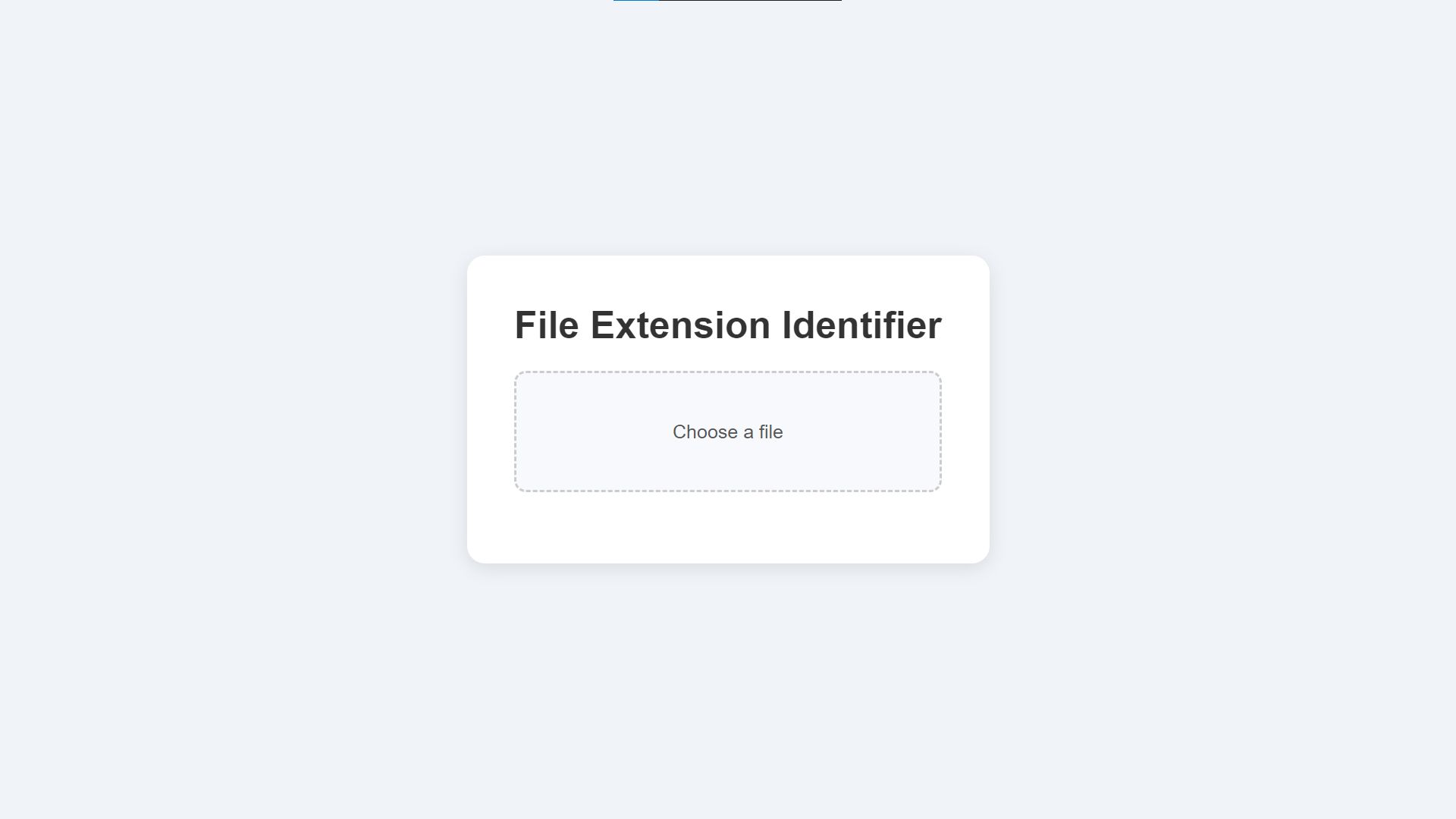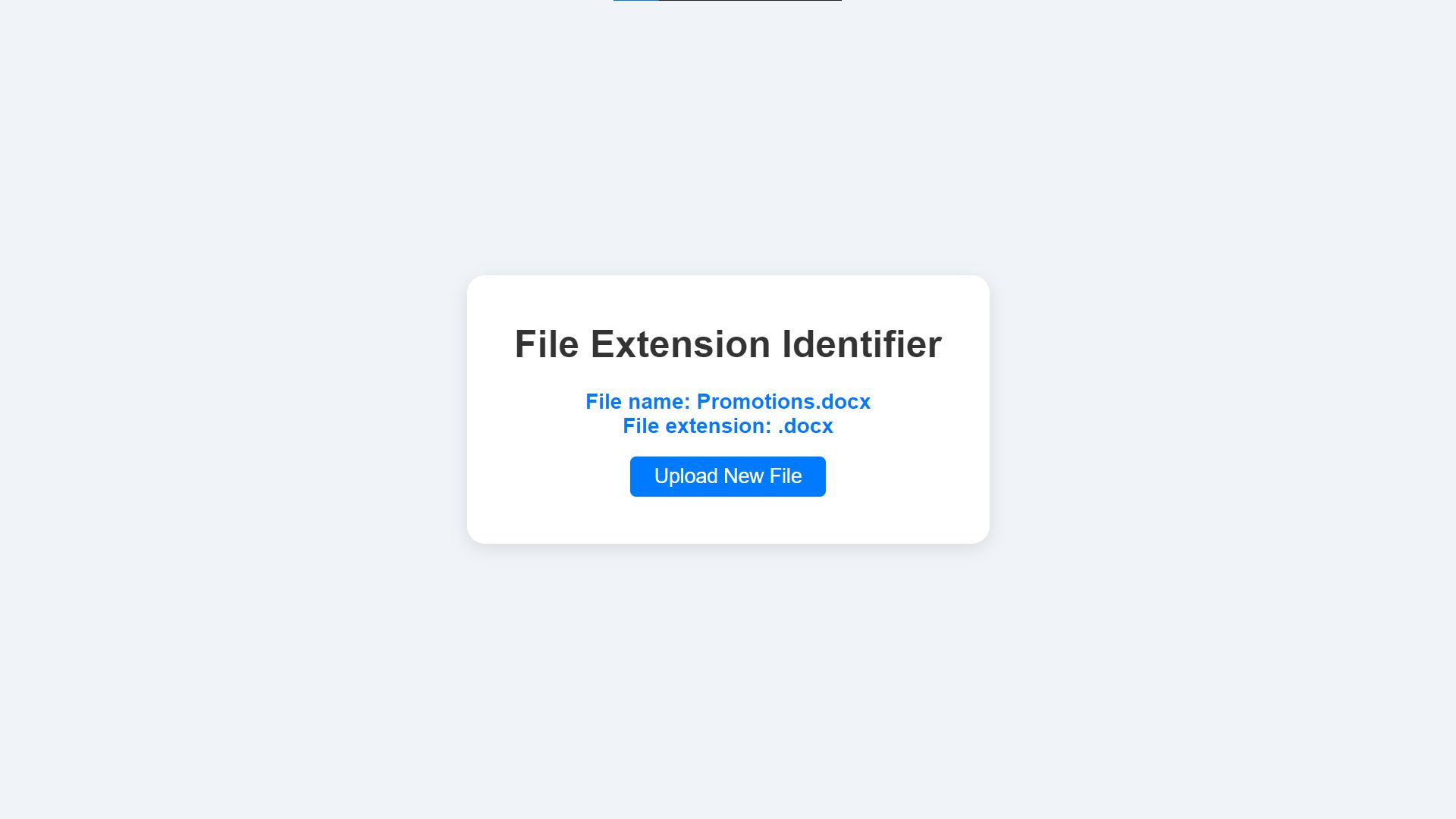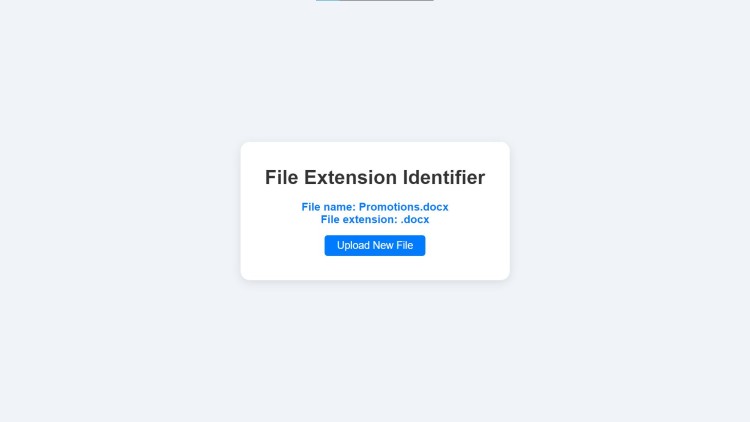File Extension Identifier Using HTML, CSS and JavaScript with Source Code
Welcome to the File Extension Identifier – a user-friendly web application designed to help you quickly and efficiently identify the file extension of any uploaded document. Built using HTML, CSS, and JavaScript, this tool provides a seamless experience for users who need to determine file types with just a few clicks. Whether you're working with unfamiliar file formats or need to double-check the extension, this app offers a streamlined process with instant results. With a clean, modern design, users can upload files and receive extension details instantly, making it a practical tool for both personal and professional use.
The interface is intuitive and simple to navigate, featuring a responsive layout that works on various devices. Simply click on the designated upload area to select a file, and the app will automatically display the file name along with its extension. If you'd like to test another file, the "Upload New File" button resets the interface without requiring a full page refresh. This makes it easy to use multiple times in succession. Whether you're on your desktop or mobile, the File Extension Identifier offers a quick and hassle-free way to identify file extensions with ease.
You may also check this simple HTML, CSS and JavaScript project:
- Microsoft File to PDF Converter
- QR Code Maker - Scan to Email
- Auto Change Random Quotes
- Double Accordion FAQ Page
- Covert JFIF to Other Format
Features:
- File Upload Functionality: Users can easily select and upload a file to the system.
- Automatic File Extension Identification: The app extracts and displays the file name and its extension after selection.
- Interactive User Interface: The design includes hover effects and smooth transitions, improving the overall user experience.
- New File Upload Option: After the extension is identified, users can click a button to upload a new file without refreshing the page manually.
- Responsive Design: The app layout adjusts to different screen sizes for seamless use on both mobile and desktop devices.
Technologies Used:
- HTML5: Provides the structure of the web page.
- CSS3: Adds styling and makes the interface modern and responsive.
- JavaScript: Implements the functionality of file selection, extension extraction, and dynamic content updates.
How to Use:
- Select a file: Click the "Choose a file" area, which opens the file selection dialog.
- View the result: Once the file is selected, the file name and extension will be displayed below.
- Upload another file: After viewing the result, click the "Upload New File" button to reset the interface and upload a different file.
Sample Screenshots of the Project:
Landing Page

Upload File

How to Run?
- Download the provided source code zip file.
- Extract the downloaded zip file.
- Open the html file and you are now ready to go!
Video Demonstration for Installation/Setup:
Conclusion:
In conclusion, the File Extension Identifier is a fast, reliable, and user-friendly tool for determining file extensions. With its clean design and seamless functionality, it offers a simple solution for anyone looking to identify file types quickly. Whether for personal use or professional needs, this app provides a practical and efficient way to manage files without requiring complex software, making it an essential tool for users of all levels.
That's it! I hope this "File Extension Identifier Using HTML, CSS and JavaScript" will assist you on your programming journey, providing value to your current and upcoming project.
For additional tutorials and free source codes, explore our website.
Enjoy Coding :>>
Note: Due to the size or complexity of this submission, the author has submitted it as a .zip file to shorten your download time. After downloading it, you will need a program like Winzip to decompress it.
Virus note: All files are scanned once-a-day by SourceCodester.com for viruses, but new viruses come out every day, so no prevention program can catch 100% of them.
FOR YOUR OWN SAFETY, PLEASE:
1. Re-scan downloaded files using your personal virus checker before using it.
2. NEVER, EVER run compiled files (.exe's, .ocx's, .dll's etc.)--only run source code.

